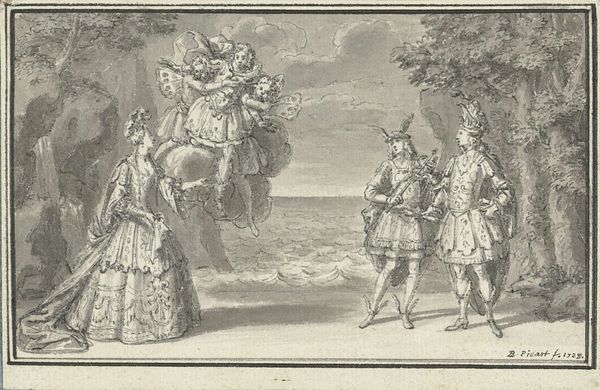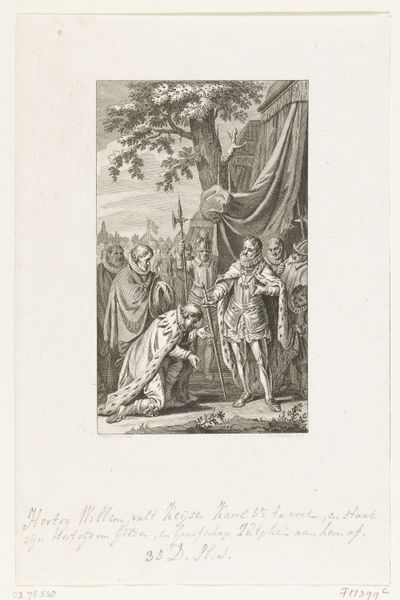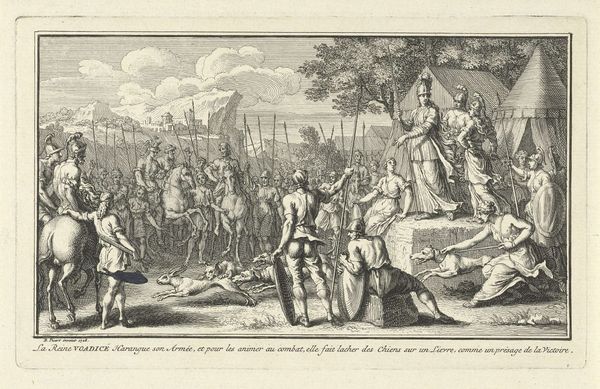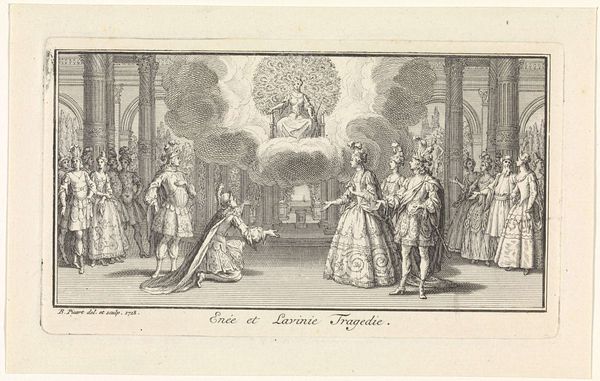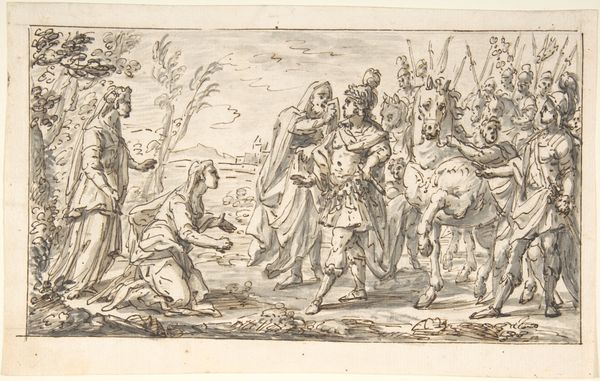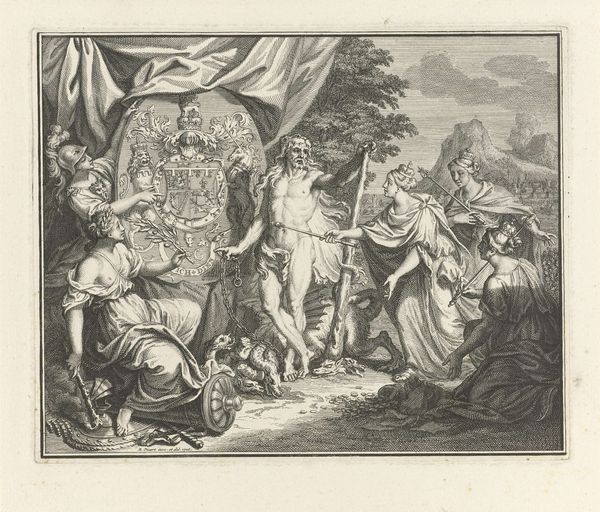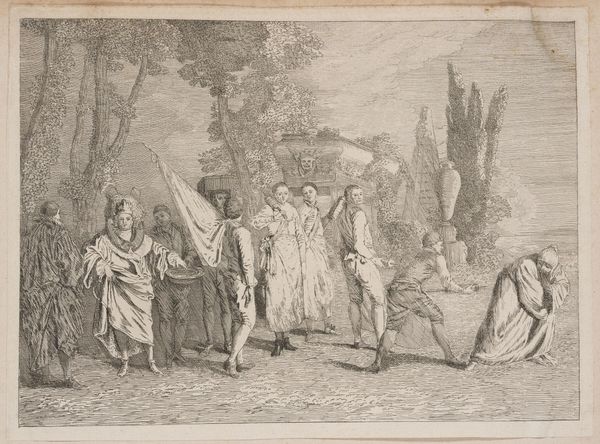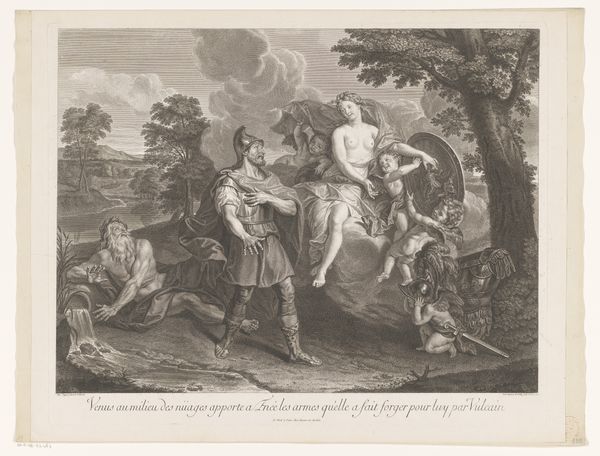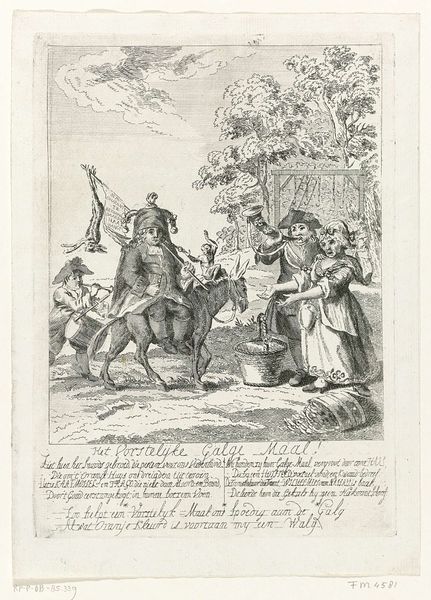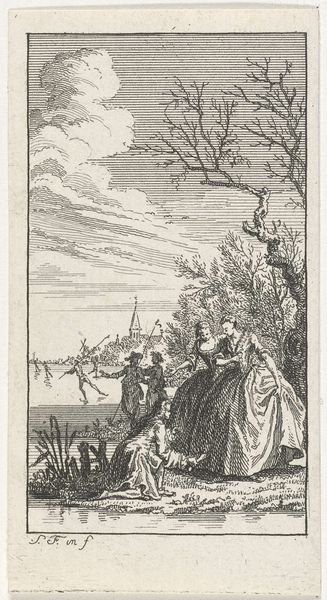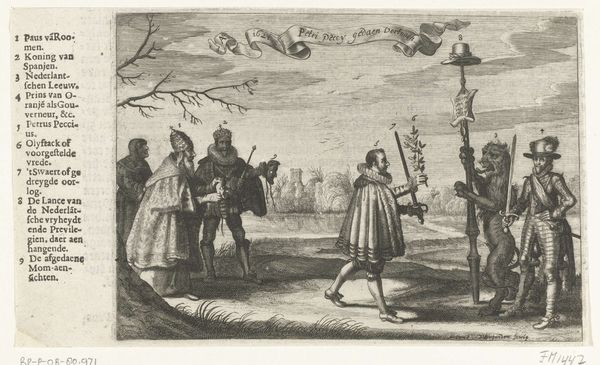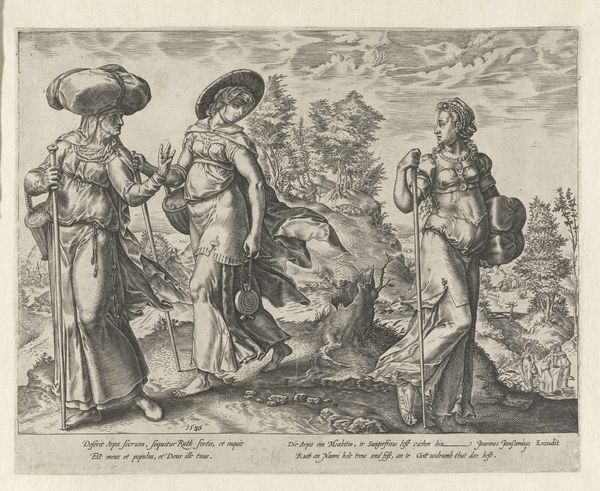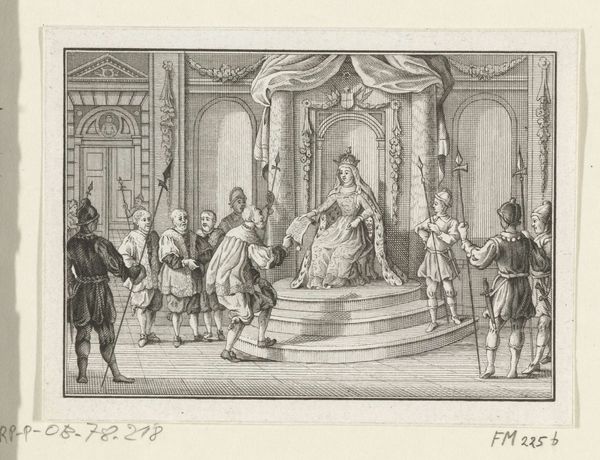
engraving
#
baroque
#
figuration
#
history-painting
#
engraving
Dimensions: height 77 mm, width 133 mm
Copyright: Rijks Museum: Open Domain
This print, "Thetis en Peleus bij het water," was made by Bernard Picart around 1728, using the intaglio process of etching. Lines were bitten into a copper plate using acid, then filled with ink and pressed onto paper. The resulting image is characterized by fine, precise lines – a testament to the etcher's skill. Picart was a master of this technique, and here he employs it to depict a scene from classical mythology. The etching process, with its reliance on careful control and repetition, was well-suited to the artistic sensibilities of the 18th century, mirroring the order and rationality valued by the Enlightenment. But etching was also labor-intensive, requiring both artistic vision and technical expertise. Consider the economic system that enabled this print to be made. It speaks to the rise of a print market, where skilled artisans like Picart could find patronage, and where images could be disseminated widely, contributing to the spread of knowledge and ideas. This reflects the burgeoning world of commerce and consumption that defined the era.
Comments
No comments
Be the first to comment and join the conversation on the ultimate creative platform.
